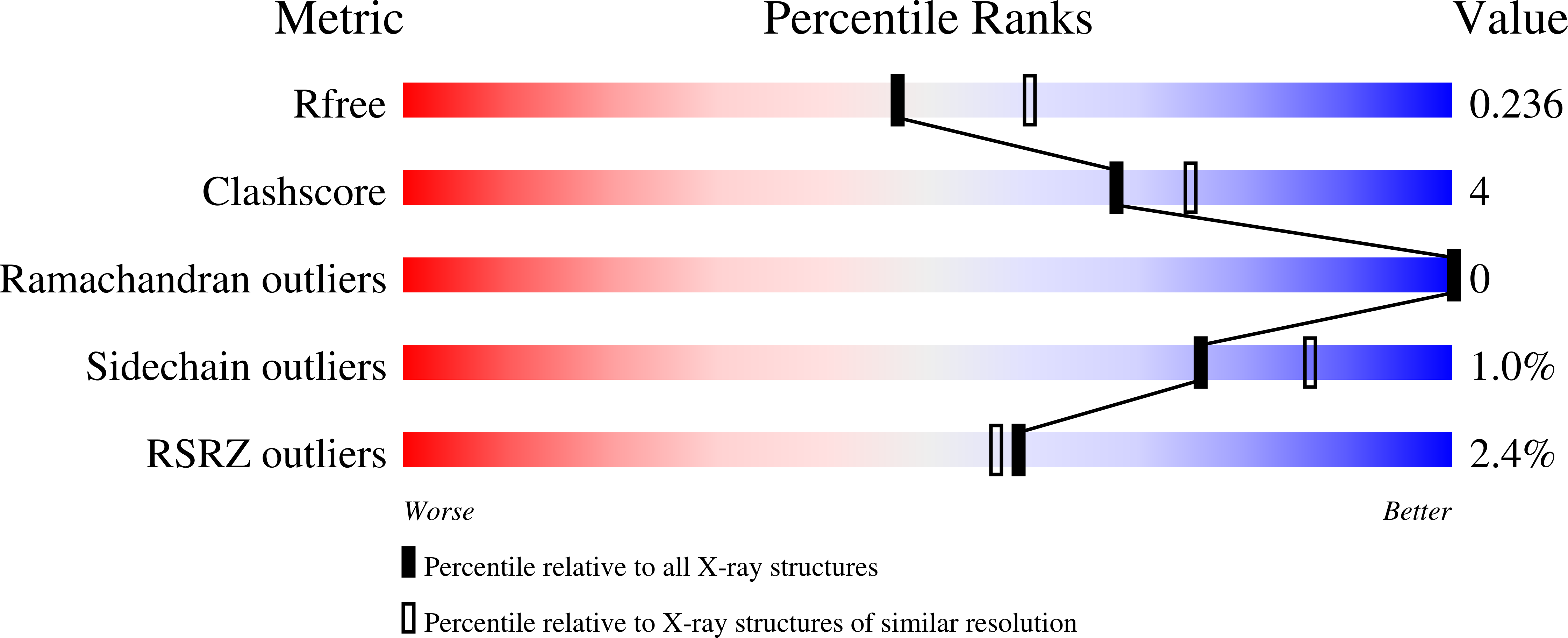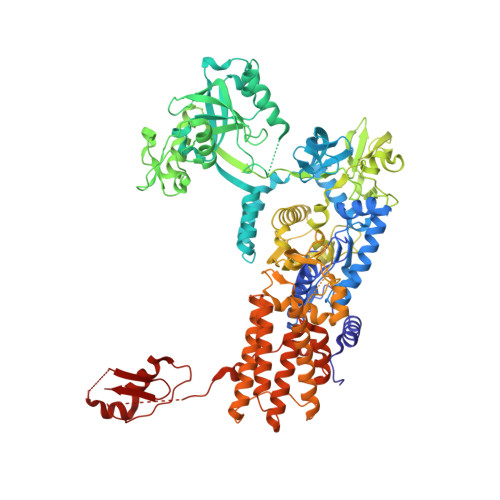Comparative analysis of pyrimidine substituted aminoacyl-sulfamoyl nucleosides as potential inhibitors targeting class I aminoacyl-tRNA synthetases.
Nautiyal, M., De Graef, S., Pang, L., Gadakh, B., Strelkov, S.V., Weeks, S.D., Van Aerschot, A.(2019) Eur J Med Chem 173: 154-166
- PubMed: 30995568
- DOI: https://doi.org/10.1016/j.ejmech.2019.04.003
- Primary Citation of Related Structures:
6HB5, 6HB6, 6HB7, 6I5Y, 6Q89, 6Q8A, 6Q8B, 6Q8C - PubMed Abstract:
Aminoacyl-tRNA synthetases (aaRSs) catalyse the ATP-dependent coupling of an amino acid to its cognate tRNA. Being vital for protein translation aaRSs are considered a promising target for the development of novel antimicrobial agents. 5'-O-(N-aminoacyl)-sulfamoyl adenosine (aaSA) is a non-hydrolysable analogue of the aaRS reaction intermediate that has been shown to be a potent inhibitor of this enzyme family but is prone to chemical instability and enzymatic modification. In an attempt to improve the molecular properties of this scaffold we synthesized a series of base substituted aaSA analogues comprising cytosine, uracil and N 3 -methyluracil targeting leucyl-, tyrosyl- and isoleucyl-tRNA synthetases. In in?vitro assays seven out of the nine inhibitors demonstrated K i app values in the low nanomolar range. To complement the biochemical studies, X-ray crystallographic structures of Neisseria gonorrhoeae leucyl-tRNA synthetase and Escherichia coli tyrosyl-tRNA synthetase in complex with the newly synthesized compounds were determined. These highlighted a subtle interplay between the base moiety and the target enzyme in defining relative inhibitory activity. Encouraged by this data we investigated if the pyrimidine congeners could escape a natural resistance mechanism, involving acetylation of the amine of the aminoacyl group by the bacterial N-acetyltransferases RimL and YhhY. With RimL the pyrimidine congeners were less susceptible to inactivation compared to the equivalent aaSA, whereas with YhhY the converse was true. Combined the various insights resulting from this study will pave the way for the further rational design of aaRS inhibitors.
Organizational Affiliation:
Medicinal Chemistry, Rega Institute for Medical Research, KU Leuven, Herestraat 49 Box 1041, B-3000, Leuven, Belgium.


















